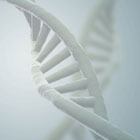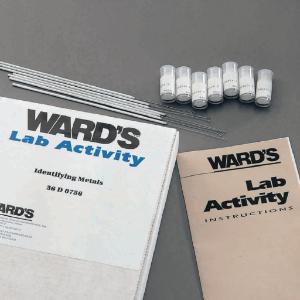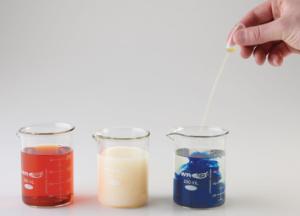Red, White and Boom! How Fireworks Work
Fireworks originated in China about 2,000 years ago. Gunpowder, also known as black powder, to distinguish it from modern smokeless powder, is the earliest known chemical explosive. Almost a thousand years later, a Chinese monk named Li Tian created the first firecracker by stuffing a bamboo stick with gunpowder and throwing it in a fire, creating a loud bang.1
Today, fireworks are used to celebrate events and traditions for many cultures around the world. While July 4th is still the "big day," Americans use fireworks year-round to celebrate at festivals, special events, sporting events such as the Super Bowl, and the famous Disney show. Fireworks lit up the skies across Japan to mark one year to go until the start of the Tokyo Olympics.
We're all a little obsessed with these breathtaking displays, but why do certain fireworks go boom, some whistle, and others crackle? What creates the dazzling red, orange, yellow, green, blue, and purple hues exploding in the skies, creating "ohhhhs" and "ahhhhs" from captivated spectators?
Excite the budding pyrotechnic engineers in your science class by showing them how chemistry is behind the beautiful colors and thunderous sounds of the fireworks that ignite our emotions.
First, let's look at some science behind these dazzling symphonies in the sky.
An explosive combination
Every firework has at least one chemical that's oxygen-rich, an oxidizer:
- Potassium nitrate
- Potassium perchlorate
- Strontium nitrate - oxygen-rich but also produces a red flame color
Then you need a fuel to combine with the oxidizer to produce heat. The fuels are things like sulfur, charcoal, aluminum powder, or magnesium powder. The oxidizer breaks down the chemical bonds in the fuel, releasing energy. Fire (from a fuse or direct flame) kick-starts the chemical reaction.
What's behind the snap, crackle and KABOOM sounds
Cover your ears! When some fireworks explode, they can rival the loudest thunderstorm.
The chemical mixture that's in the firework determines what type of sound it makes. Pyrotechnics burn that mixture to create the boom or bang we look forward to when a firework explodes. Gunpowder is a bursting charge made of sulfur, charcoal, and potassium nitrate (saltpeter). The sulfur and charcoal act as fuels, while the saltpeter is an oxidizer.
There are more modern bursting charges with metal powders in them that are sharper and louder and flash with a light effect to make fireworks that rock the house. Common bursting charges include:
- Black powder
- Flash powder
- H3
- Whistle mix
Keep your powder dry because once the fuse is lit, it burns into the center of the shell, lights the time delay fused connected to the bursting charge, and - KABOOM!
That booming sound we hear after the explosion is from the quick release of energy, which causes the air to expand faster than the speed of sound, creating a shockwave. Those shells bursting in air surely give proof through the night that our flag is still there (cue the patriotic music here)!
How fireworks get those spectacular colors
We know that different chemical elements, heated to high temperatures, get rid of this energy by emitting particular wavelengths of light. Metal salts are ideal for fireworks because these compounds produce intense colors when they're burned.
Some examples include
- Strontium for red
- Barium for green
- Calcium for orange
- Copper for blue
- Sodium for yellow
- Copper and Strontium for purple
When the element ignites, the electrons surrounding the atoms get excited and energized in the flame. As the various elements ignite, they release different wavelengths of light, which translate into different colors depending on the type of firework.
Some colors are harder to produce than others. Most pyrotechnic engineers agree that blue is the hardest color to produce. That's because the evening sky is a shade of blue, so most blues don't show up as well as other colors. If you try to make the blue brighter to contrast with the background, it can look washed out. You've got to get the right balance of copper and other chemicals in the flame or combustion reaction to produce the best blue color flame in a firework.
Students will get a blast out of exploring the chemistry of pyrotechnics. One day they may be the pyrotechnician who exhilarates us with the booms, bangs, and brilliant colors of a fireworks display.
1. History of Fireworks, Redmoon Fireworks
Recommended products:
[StartProductBlock]

FUN-damental Chemical Reactions Kit
Teach students to recognize the common distinguishing phenomena that occur during chemical reactions. Students observe effervescence, color change, temperature change, and the formation of precipitate. .
[EndProductBlock]
[StartProductBlock]

Ward's® Identifying Metals Lab Activity
Bring Fireworks into Your Lab. Students investigate what happens when a substance containing metal is heated to high temperatures.
[EndProductBlock]
[StartProductBlock]

Ward's® Essentials Exothermic Reactions Lab Kit
Students monitor and graph temperature change in an exothermic reaction, and create a heat pack, which utilizes an exothermic reaction.
[EndProductBlock]
[StartProductBlock]

Ward's® Chemistry Forming Red, White, and Blue Demonstration
This "patriotic" demonstration illustrates complex ion formation, double replacement reaction, and Prussian blue. Three reactions are carried out, resulting in red, white, and blue solutions.
[EndProductBlock]
